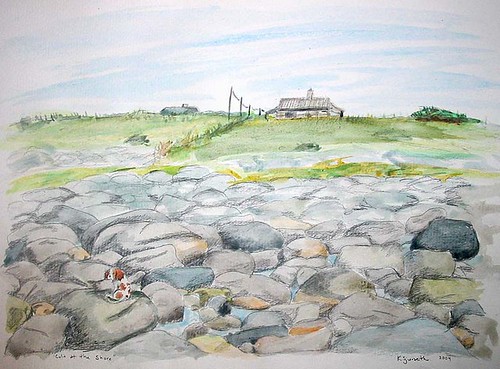I always loved art class in school.  I loved clay, acrylics, pastels, colored pencils, figure drawing, etc, etc, and I was pretty good at most of them. But the most deceptively simple and difficult of all, I believe, is the watercolor.
I loved clay, acrylics, pastels, colored pencils, figure drawing, etc, etc, and I was pretty good at most of them. But the most deceptively simple and difficult of all, I believe, is the watercolor.
You’d start out with the lightest possible pencil sketch and eventually end up with a muddy grayish page. “This doesn’t look like The Badlands!” you’d regally remark and toss your crumpled page in the bin.
In
- You need actual watercolor paper. It absorbs the color and holds it in place. I think my art teachers substituted drawing paper which quickly becomes a soggy wrinkled sheet. On the other hand, it’s probably much much cheaper for Middle School students who probably weren’t going to produce amazing works of art anyhow.
- The pencil sketch underneath is vital. It’s how you produce shading. You can do some with the paint itself, but that pencil shading will give you darker, better shadows and forms. I was always instructed to use the paint for all the shading and the sketch was simply a guideline.
Now, like most rules, I feel certain gifted painters can totally disregard them, but one must crawl before one rockets a small dog into space.
I also learned some good tips on combining color and adding washes from Cranshaw. We started watching him because Knut would get so relaxed he’d fall asleep in seconds. He’s as good as a bedtime story, and I mean that as a compliment.
I haven’t done much painting since we moved back to the

1 comment:
Also, you really need to "stretch" the watercolor paper first - i.e. get it damp enough so that it'll bloat out and deform before you start painting on it.
Post a Comment